Keeping Crawlie Critters as Pets: Meet our Stick Insects
Last month we became the proud new owners of stick insects. As a family accustomed to the cuteness of guinea pigs and rabbits, the new, less cuddly additions have caused a stir. We’ve never kept insects before and yet here we are, bottling up bugs and blackberry branches.
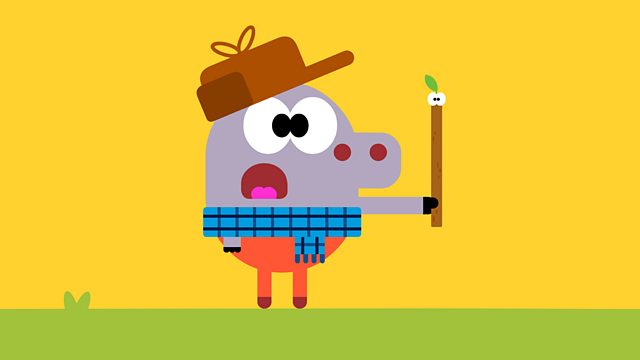
Little ones familiar with Hey Duggee’s Stick Badge episode, who’re yet to meet a real stick insect, could end up disappointed. Stick insects aren’t as cartoonishly cute as the googly eyed “Stick”, and (thankfully) they don’t break out into a rave at the drop of a hat. But what stick insects lack in character (sorry, stickies), they make up for in fascination.
Stick insects are the classroom pet renowned as being one of the easiest pets a child can start off with next to, I assume, the poor old goldfish. The reason being they simply don’t ask for much. Stickies don’t take up much space; they’re low maintenance and they’d probably be quite happy never being touched. Simple.
Now, with less than a month’s experience under my belt, I’m not about to go “all expert” on you. If you’re looking for solid advice, you’re best checking out the places I’ve bookmarked, such as these: Keeping Insects and The Spruce Pets.
No, I’m just here to tell you how on earth we came to acquire a jar of stick insects, and what, as newbie bug parents, we’re doing with them.
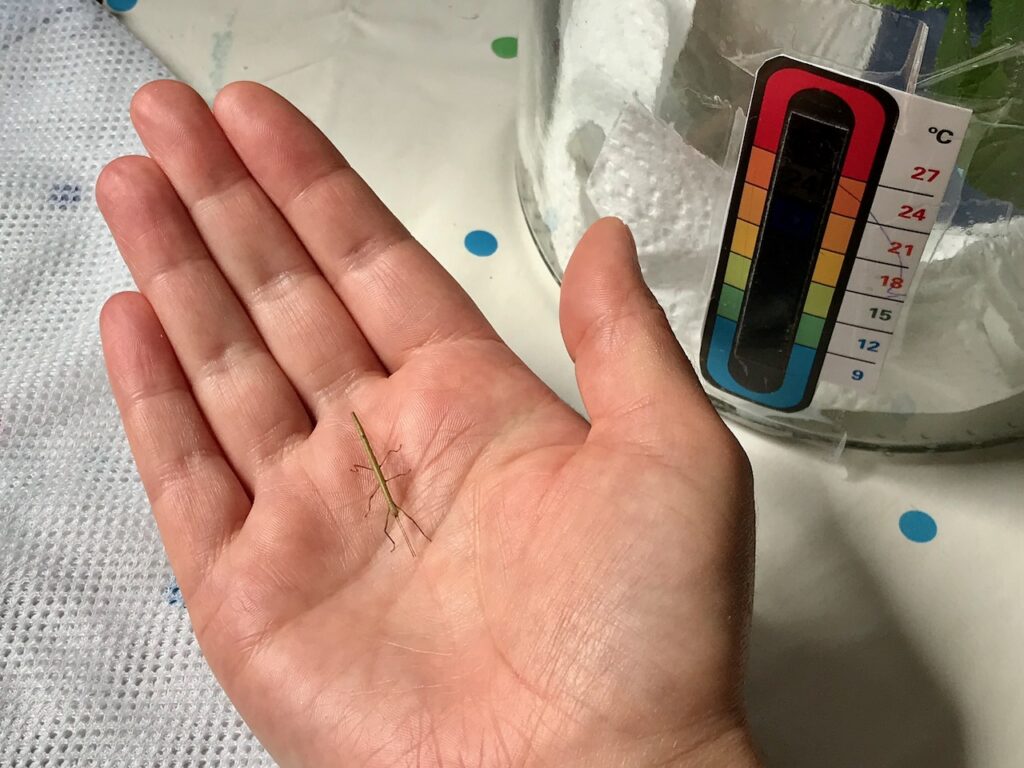
Our sticky adventure began with a friend’s Facebook post entitled: “Sticks that are alive” – you know, just in case you were in the market for the type of stick that’s not. (Thanks Suz!)
Indeed, there were dozens of the stick-like critters to re-home because it turns out stick insects are asexual and can reproduce on their own. (Who knew?)
So I said, yeah, we’d love some – send them our way! Half panicking I may have lost my sanity this time.
I do actually like bugs – well, some of them. And I have to admit I’ve occasionally pondered the thought of keeping stick insects long before now. But as enthusiastic as I was, I did have apprehension too. I mean, I like to think I’m a responsible owner (and it’s probably the fail fearing part of me) who wants to get it right first time. So I did some reading first, learning the basics and figuring out what we’d need to get started.
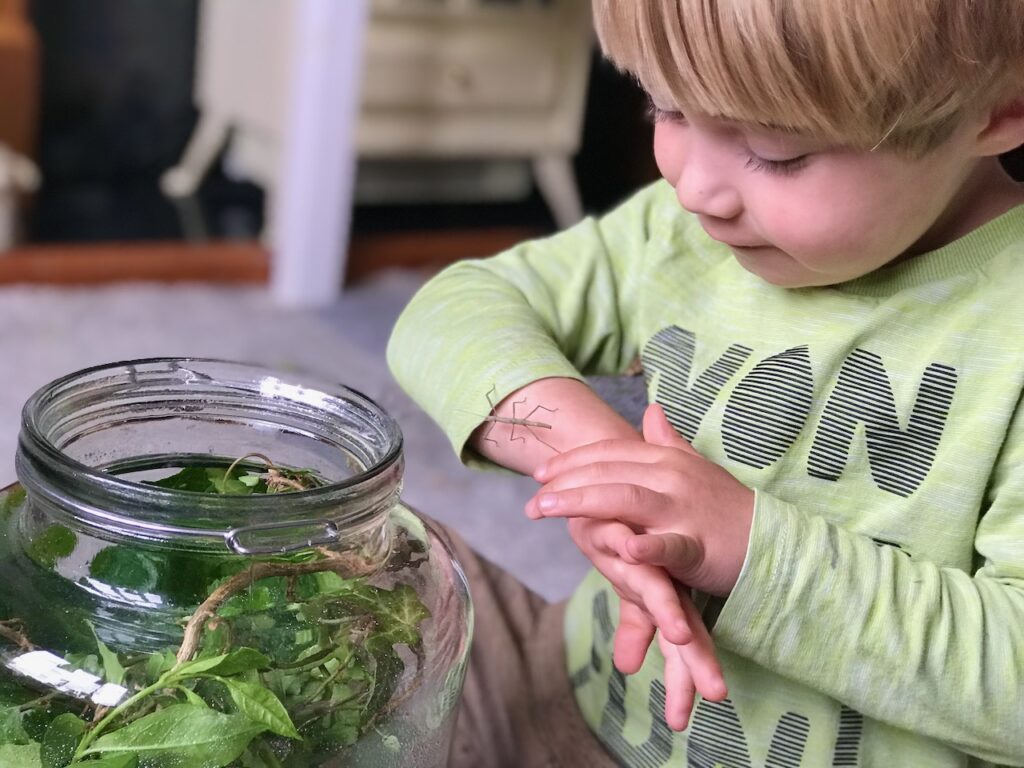
Setting up Home
It transpires that a stick insect’s home can be one of many things, as long as the enclosure is sufficient size, isn’t air tight but escape proof.
Rather than purchasing something like a butterfly cage or a glass tank, I thought of the big 5 litre Kilner drinks dispensers I’d kept from our wedding. Just one of them measures up the ideal size for a few small stickies – nice and compact but safe and with plenty room to move.
Before using the Kilner bottle there were a few alterations to make. Firstly the tap needed removing and the hole it was in taping up. Then there was the solid glass lid to replace with a vented lid that would be easy to remove but also keep the little critters in. So for this you need some sort of mesh. I ended up cutting up a small laundry bag – the soft mesh type for lingerie and socks – and secured it over the top of the bottle using a simple hair elastic! (You could also use an actual elastic band like normal people, but there you go.)
As our stick insects are the common Indian species, their diet is simple. Just a few short branches of safe plants (bramble, hawthorn, ivy or privet) with plenty leaves intact kept fresh in a cup of water.
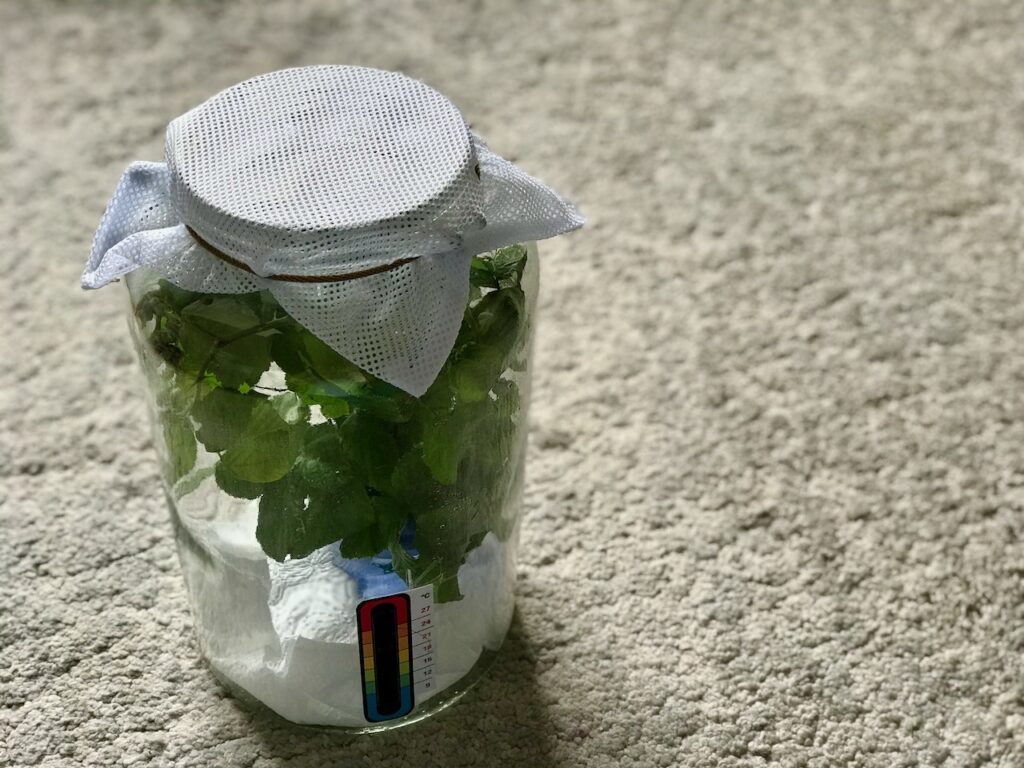
Maintenance
So, stick insects poop. I know, it should be a no brainer that something living will poo, but still, I was amazed a bug’s poop could be so visible. It’s not the worst poo I’ve ever dealt with – just tiny black squiggles dotted about on leaves and fallen to the bottle floor – but all the same, it’s a bit gross and wants removing regularly.
Don’t let the thought of poop put you off though; stickie housekeeping is a doddle.
The first time I set up the bottle I lined the bottom with a thin layer of compost and then a scattering of garden stones, which looked super professional and interesting. A natural substrate like soil likely helps create the natural ecosystem but for a novice owner it was a bit overcomplicated. Cleaning out was a faff – the wet soil was tricky to empty out through a narrow opening and the stones needed regular washing with a sieve.
Now I’m simply placing two sheets of kitchen paper on the bottom of the container which is working perfectly fine; it catches fallen poop and is easy to replace.
Daily I spritz around the inside foliage with a water sprayer to maintain a damp and humid atmosphere; the water droplets are what the sticks drink from so this is important to keep an eye on. Temperature wise they want to be a minimum 17 degrees celcius so I’ve considered a warm room for them to live in, and just to keep an eye on the temp we’ve stuck a simple temperature gauge on. They’re around 20 degrees celcius and seem to be happy.
And every week, sometimes more often, I do a total clean out and replace the branches will fresh leafy ones.
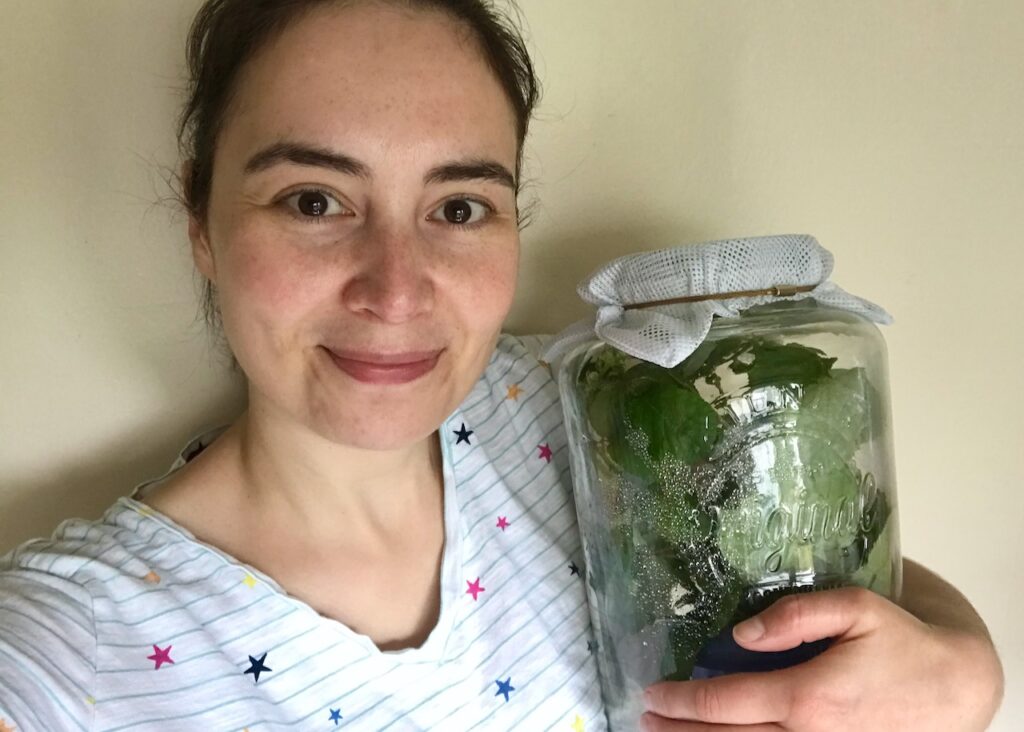
Now what?
Well, I guess it’s however you like to appreciate your pets. Of course bugs aren’t the cuddly kind, but you can enjoy them like any other pet. Care for them well, watch them grow and “do their thing”.
I quite like to noisy up at their glass and see if they’re still alive what they’re up to. Usually it’s nothing. Stick insects are nocturnal so they’re pretty still during the day, unless my big hand delves in and fishes them out for a closer look. The nymphs appear livelier than the bigger sticky and are usually hanging around the top of the jar, often on the underside of the mesh. They’re quite happy to be scooped up to wander from hand to hand, or up my arm. They’re actually quite fascinating to look at.
It’s the bigger sticky that seems to be more cautious of me for some reason. As stick insects apparently like to do when they’re feeling threatened (sor-ry for caring), she’ll play dead. As in, actually look like a stick and fall lifeless, legs tucked in, so all you see is, well, a stick.
Thinking back to their reputation as classroom pet, stick insects do make good kids pets. They’re not hugely exciting and don’t give much back like a furry pet may, but they teach you a lot on a basic level: certainly responsibility and cause and effect. Kids can help gather leaves, handle the insects carefully, and learn how a live animal needs good care and attention to survive. In all honestly, Reuben isn’t nearly as interested as I am, but still I like to involve him and he’ll stay intrigued long enough to allow a sticky to crawl around his arm.
And that’s it, I suppose. We now have stick insects that live in a bottle on a table, eat leaves and behave like sticks if they’re spooked. So a more dramatic pet than you or I first realised then!


Leave a Reply